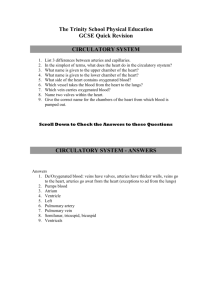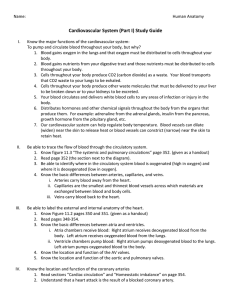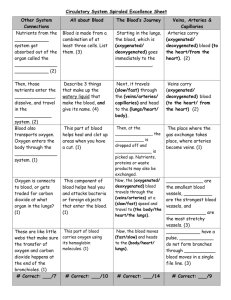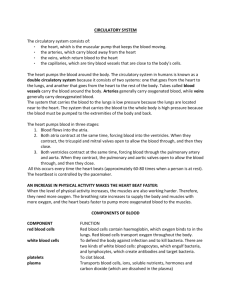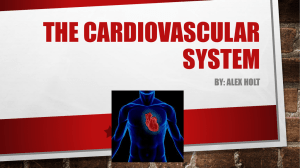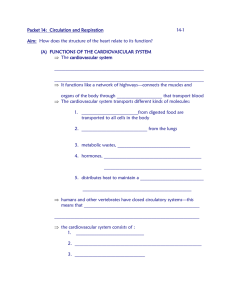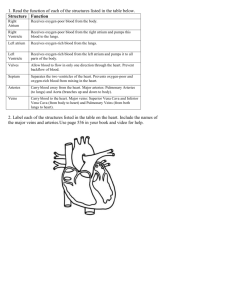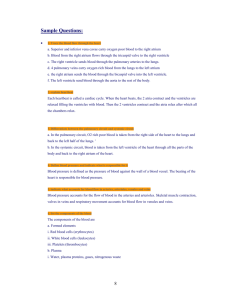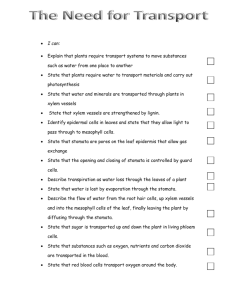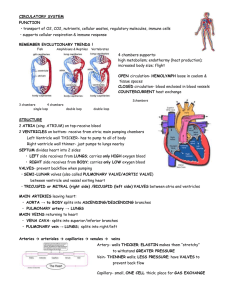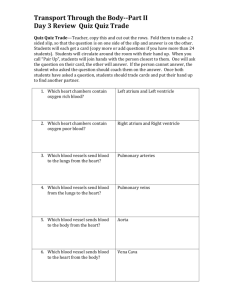Online Heart Activity: Anatomy and Circulation Lab
advertisement
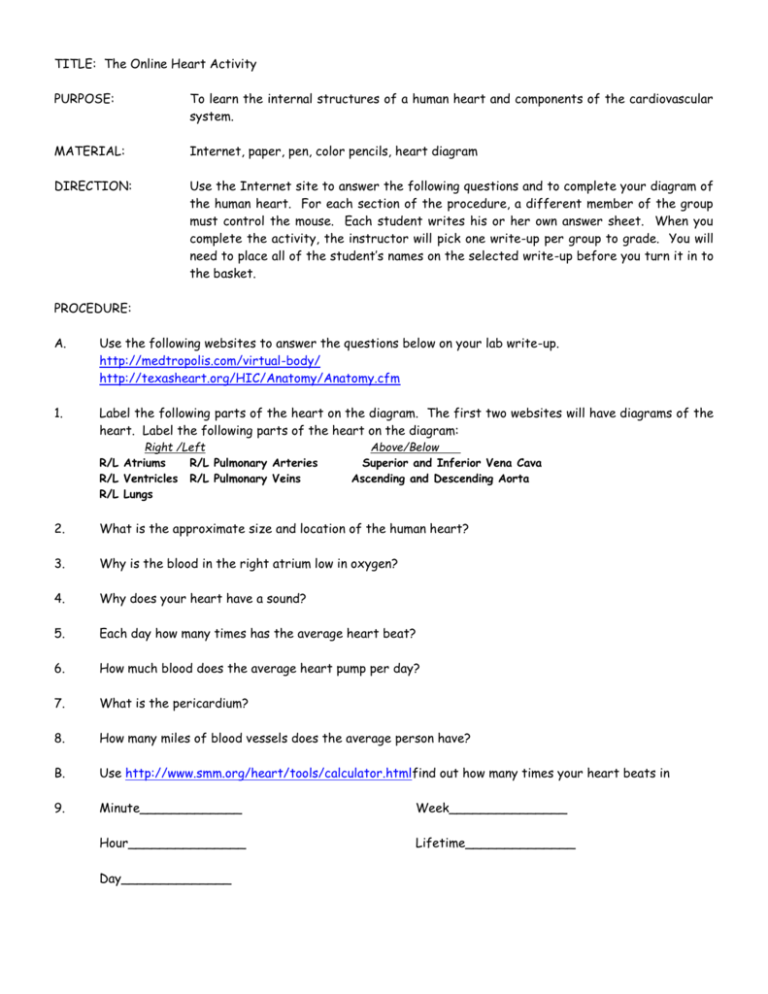
TITLE: The Online Heart Activity PURPOSE: To learn the internal structures of a human heart and components of the cardiovascular system. MATERIAL: Internet, paper, pen, color pencils, heart diagram DIRECTION: Use the Internet site to answer the following questions and to complete your diagram of the human heart. For each section of the procedure, a different member of the group must control the mouse. Each student writes his or her own answer sheet. When you complete the activity, the instructor will pick one write-up per group to grade. You will need to place all of the student’s names on the selected write-up before you turn it in to the basket. PROCEDURE: A. Use the following websites to answer the questions below on your lab write-up. http://medtropolis.com/virtual-body/ http://texasheart.org/HIC/Anatomy/Anatomy.cfm 1. Label the following parts of the heart on the diagram. The first two websites will have diagrams of the heart. Label the following parts of the heart on the diagram: Right /Left R/L Atriums R/L Pulmonary Arteries R/L Ventricles R/L Pulmonary Veins R/L Lungs Above/Below Superior and Inferior Vena Cava Ascending and Descending Aorta 2. What is the approximate size and location of the human heart? 3. Why is the blood in the right atrium low in oxygen? 4. Why does your heart have a sound? 5. Each day how many times has the average heart beat? 6. How much blood does the average heart pump per day? 7. What is the pericardium? 8. How many miles of blood vessels does the average person have? B. Use http://www.smm.org/heart/tools/calculator.htmlfind out how many times your heart beats in 9. Minute_____________ Week_______________ Hour_______________ Lifetime______________ Day______________ C. Go to http://academic.cengage.com/biology/discipline_content/animations/blood_circulation.swf and as the animation plays, trace (using color pencils) on your diagram the pathway of the dark blue, deoxygenated blood into the right atrium, the right ventricle, and on to the lungs via the pulmonary artery. Then trace the path of the bright red oxygenated blood from the pulmonary vein, through the left atrium and ventricle, and out through the aorta to the other organs and tissues of the body. Make a key on your diagram. 10. Why is the blood drawn in two different colors in this illustration, that is, how does the “blue” blood differ from the “red” blood”? What gives blood its color? Is your blood really blue? http://en.wikipedia.org/wiki/Blood Human blood is red, ranging from bright red when oxygenated to dark red when not. It owes its color to hemoglobin, a metalloprotein compound containing iron, to which oxygen binds (Oxygen is attracted to iron and when they are together you get rust). There exists a popular misconception that deoxygenated blood is blue and that blood only becomes red when it comes into contact with oxygen. Blood is never blue, but veins appear blue because light is diffused by skin. The red light is absorbed by the veins and the blue light is reflected back to your eye. From a physiological perspective, veins and arteries appear similar when skin is removed and are seen directly. If you have ever had blood drawn from the arm in your vein, you have seen the dark reddish brown appearance of the deoxygenated blood. (Some animals do have blue blood. This is because the metal that carries the oxygen in the blood is copper.) D. Go to http://academic.cengage.com/biology/discipline_content/animations/blood_circulation.swf use the animation to answer the following questions. and 11. What is the difference between the pulmonary and systemic circuits (loops)? 12. What does the blood drop off in the lungs and what does it pick up in the lungs? 13. Other than the lungs and the heart, name four major organs through which the blood passes. E. Go to http://www.pennmedicine.org/encyclopedia/em_DisplayAnimation.aspx?gcid=000091&ptid=17 and use the animation to answer the following questions. 14. What are six things that the blood carries to the other cells of the body via the arteries and capillaries? 15. What are two things does the red blood cell carry away from the cells of the body? RBC drop off these unneeded compounds? F. Next, go to www.heart.org web page. This is the site for American Heart Association. You will search this site to answer the follow questions about heart attacks and strokes. For Question #9, begin by doing a search for “What is a heart attack?” in this site. For the rest of the questions, look at the main menu choices or use the search. 16. Describe what happens to the coronary arteries and the heart muscle during a heart attack. 17. List four to five things that you can do to reduce your risk of heart attack. 18. What happens during a stroke? 19. List at least four ways you can help prevent having a stroke. G. Staple all your group’s lab write ups together and turn them in. Where does the
